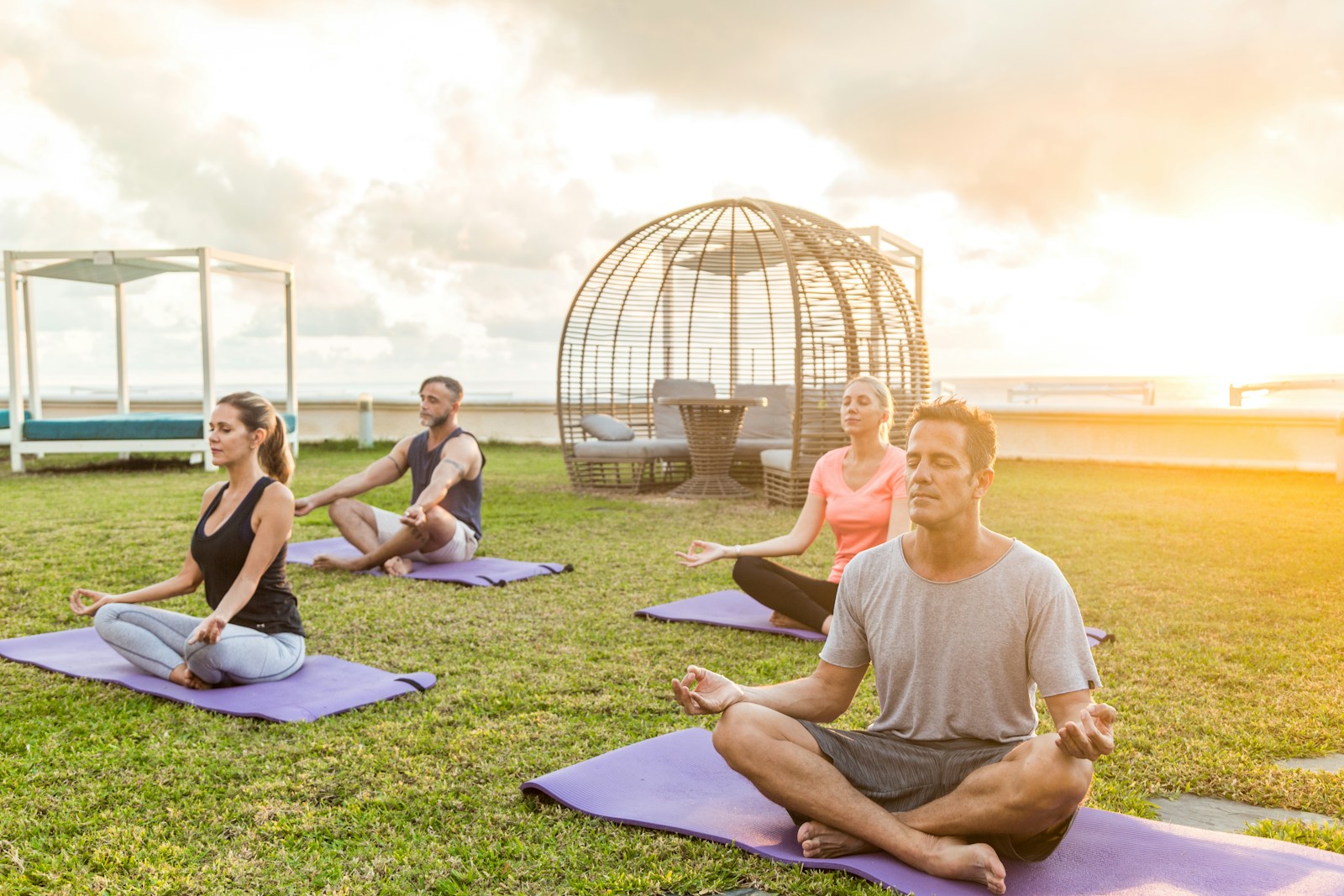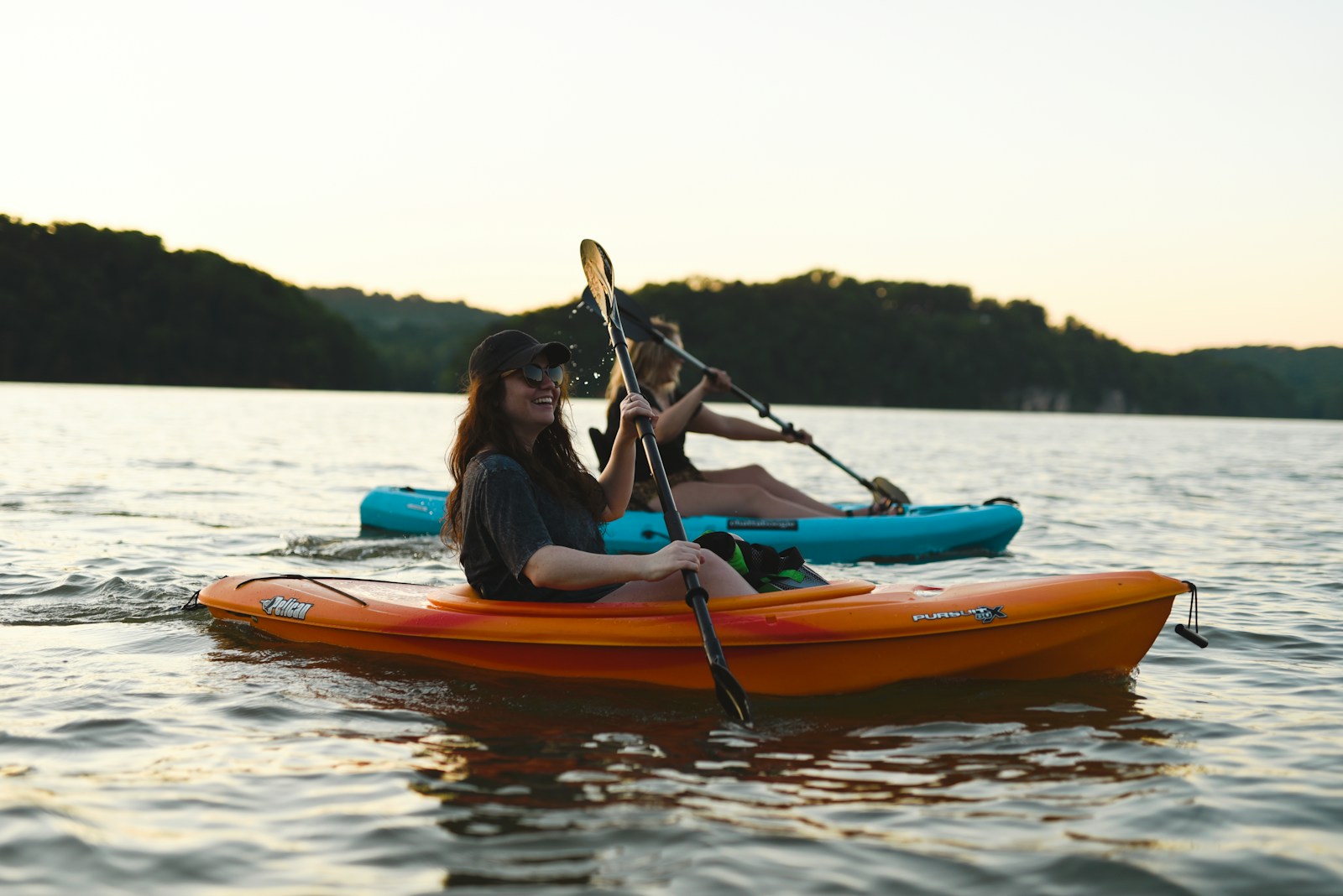Low-impact outdoor activities, such as hiking, cycling, kayaking, and even gardening, offer substantive ways to exercise while minimizing physical stress. These activities enhance cardiovascular fitness, improve strength, boost mental health, and promote a profound connection with nature. From mastering techniques of bird watching to practicing the patience required in fishing, each activity provides a unique set of benefits and challenges. Balancing physical exertion with tranquility, they cater to a range of fitness levels and interests. Continuing to explore these activities will allow deeper understanding of their respective intricacies, benefits, and the path towards a healthier lifestyle.
Understanding Low Impact Activities
To fully appreciate the benefits of outdoor activities, it is essential to understand what is meant by ‘low impact activities’; these are forms of physical exercise that exert a minimal amount of stress on our bodies, particularly on the joints and muscles, while still promoting overall health and well-being.
However, there are some common Low Impact Misconceptions that can deter people from engaging in these types of activities. Many individuals incorrectly believe that low impact means low intensity. However, this is a misconception. A low impact activity can be just as rigorous and effective as high impact exercise, but it simply places less strain on the body.
In terms of Impact Activity Variations, these range from low impact aerobic exercises such as walking, swimming, and cycling, to strength training exercises that utilize resistance bands or light weights. There are also balance and flexibility exercises like yoga and Pilates which are excellent low impact options.
Benefits of Low Impact Exercise
Low impact exercises, such as outdoor activities, offer a plethora of health benefits that promote both physical and mental wellbeing. They serve as a significant catalyst in promoting heart health, enhancing mental wellness, and improving joint flexibility. We will now explore how these benefits are achieved and their long-term impact on overall health.
Promotes Heart Health
Participating in low-impact outdoor activities notably enhances heart health, by improving cardiovascular endurance and decreasing the risk of heart disease. Regular practice of activities such as walking, cycling, or swimming, combined with heart friendly diets, can greatly enhance overall heart function and reduce the likelihood of cardiovascular diseases.
The benefits of these activities include:
- Increasing the heart’s efficiency and strength, thereby improving its pumping ability.
- Boosting cardiovascular endurance, enabling the heart to efficiently pump oxygen throughout the body.
- Reducing levels of harmful LDL cholesterol and increasing beneficial HDL cholesterol.
- Lowering blood pressure levels, thereby reducing strain on the heart.
Enhances Mental Wellbeing
Engaging in outdoor activities with low impact not only promotes physical health but also greatly enhances mental wellbeing, offering a multitude of psychological benefits. These activities are essential in maintaining emotional balance as they help in reducing stress and boosting mood. They provide an opportunity for mindful meditation, a practice that fosters focus and presence in the moment, thereby reducing anxiety and promoting mental clarity. In fact, studies suggest that such activities can stimulate the production of endorphins, the body’s natural feel-good hormones, leading to feelings of happiness and tranquillity. Moreover, the exposure to natural light during these activities can help regulate sleep patterns, contributing to improved mental health. As a result, low impact outdoor activities are an effective means of supporting and enhancing mental wellbeing.
Improves Joint Flexibility
Outdoor activities with a low-impact nature serve as a gentle yet effective way to improve joint flexibility, an essential aspect for maintaining mobility and preventing joint-related conditions. These activities, combined with a flexibility diet and regular stretching routines, can enhance joint health and overall body function.
Low-impact outdoor exercises offer various benefits for joint flexibility, such as:
- Encouraging natural, fluid movement patterns that promote flexibility and strength.
- Aiding in the reduction of joint stiffness and pain.
- Enhancing overall joint mobility and range of motion.
- Providing an excellent complement to a flexibility diet and stretching routines.
Hiking: Natures Walking Workout
As an ideal merger of exercise and exploration, hiking offers a low-impact, yet highly beneficial, workout by utilizing the natural terrain as its treadmill. This engaging activity not only strengthens your cardiovascular system but also provides an opportunity to immerse in nature’s beauty, enhancing mental wellbeing.
One cannot overemphasize the importance of trail safety when starting on a hiking adventure. Always research and familiarize yourself with the trail beforehand, watch out for potentially hazardous terrain, and respect wildlife from a distance. Weather conditions can change rapidly, so it’s essential to check forecasts and plan accordingly.
Backpack essentials are another crucial aspect of hiking. Pack lightweight but adequately. Water, nutrient-rich snacks, first-aid kit, map, compass, and a multi-tool are some of the basics. In addition, appropriate clothing and footwear can make a significant difference in comfort and safety. Don’t forget essentials like sunscreen, insect repellent, and a headlamp or flashlight.
Hiking is not just a form of exercise but also a journey of discovery. It allows you to connect with nature while reaping numerous health benefits. Safe and prepared, you can enjoy this low-impact workout without straining your body.
Cycling: A Gentle Journey
Shifting from the rugged pathways of hiking, we set out on a different kind of outdoor adventure with cycling, a smooth and serene journey that offers its own set of unique benefits. Cycling not only offers a chance to explore the outdoors at a leisurely pace but also provides a key exercise that can be tailored to any fitness level.
Key factors to think about for an ideal cycling experience include:
- Regular bike maintenance to guarantee safety and longevity of your bicycle
- Careful route planning to maximize enjoyment and safety
- Appropriate cycling gear for comfort and protection
- Adequate hydration and nutrition for sustained energy during the ride
Bike maintenance is vital, ensuring that your bike remains in good condition and safe to use. It also extends its lifespan. Route planning is equally important, as it determines the terrain you’ll be traversing, the distance, and the level of difficulty. Having the right gear can make a significant difference in your comfort and overall experience. Lastly, staying hydrated and well-fed during your ride is crucial to maintain energy levels and prevent fatigue. This gentle journey of cycling is more than just a ride; it’s an exploration of self and nature.
Kayaking: Row for Fitness
Kayaking is not simply an enjoyable outdoor activity; it also serves as a low-impact exercise that provides numerous health benefits. From cardiovascular fitness to muscle strengthening, we will explore the myriad of ways kayaking can improve your physical health. We will also consider the essential gear required for kayaking, ensuring a safe and efficient workout on the water.
Kayaking Health Benefits
Embracing the rhythmic dance of paddle and water, one can discover a myriad of health benefits inherent to kayaking, a low-impact outdoor activity that combines cardiovascular workout with muscle strengthening. Proper kayaking safety and paddling techniques are essential not only for the activity’s enjoyment but also to maximize its health benefits.
Kayaking offers a diverse range of health benefits:
- Improved cardiovascular fitness: Frequent paddling increases heart rate and improves overall cardiovascular health.
- Upper body strength: The act of paddling engages multiple muscle groups in the upper body, resulting in improved strength and endurance.
- Mental health benefits: Being in nature and focusing on the rhythm of paddling can reduce stress and improve mental well-being.
- Increased core stability: The balance required during kayaking strengthens the core muscles.
Essential Kayaking Gear
To fully reap the health benefits of kayaking while ensuring safety, it is essential to equip oneself with the necessary kayaking gear. A well-maintained kayak is paramount to both performance and safety. Regular kayak maintenance, including checking for damage and keeping it clean, can prevent potential mishaps on the water.
Having the right paddles is also critical. They should be appropriately sized for the kayaker, with the paddle’s length and blade size affecting your paddling techniques and efficiency in the water. Additionally, a personal flotation device or life vest is non-negotiable for safety, even for the most experienced paddlers. To end, don’t forget a helmet and a dry bag for personal belongings. Equipping yourself properly not only enhances your kayaking experience but also contributes to your fitness journey.
Stand-Up Paddleboarding Basics
Delving into the world of stand-up paddleboarding presents an exciting blend of balance, strength, and outdoor adventure, providing a vital activity that requires only basic equipment and technique. Among the first things to learn are the paddleboarding techniques, which involve the correct paddle grip, effective stroke methods, and maintaining balance while standing on the board.
Board selection advice is essential for beginners. A wider, longer board offers more stability, making it the perfect choice for those who are just starting their paddleboarding journey. As one progresses, they can opt for narrower boards for increased speed and maneuverability.
Key points to remember about stand-up paddleboarding include:
- Always wear a personal floatation device for safety.
- Start in calm, flat water, and gradually progress to choppy waters as you gain confidence.
- Use a leash to keep your board close in case you fall off.
- Keep an eye out for weather changes and avoid paddleboarding in extreme conditions.
Stand-up paddleboarding is a fantastic way to explore water bodies, get a full-body workout, and enjoy the serene beauty of nature, all while maintaining a low-impact on your joints and environment. It’s an expedition waiting to be undertaken.
Outdoor Yoga: Mind and Body
Shifting from the dynamic motion of stand-up paddleboarding, outdoor yoga offers a serene retreat that harmonizes both mind and body, promoting wellness through a series of poses and breath control exercises amidst nature’s tranquility. This important element in an outdoor yoga practice. It should be comfortable, breathable, and flexible enough to allow for uninhibited movement through various poses. High-quality yoga apparel can enhance your overall experience, providing support where it’s needed and promoting better posture and alignment.
Breathing techniques, or Pranayama, are integral to outdoor yoga, fostering a deeper connection between your physical presence and the natural environment. This might involve inhaling the fresh outdoor air deeply, holding the breath momentarily, and then exhaling slowly, a process that helps to reduce stress while increasing mental clarity and focus.
Outdoor yoga is not simply about physical exercise. It is a holistic practice that nurtures the mind, body, and soul, all while allowing you to connect with nature in an intimate and unique way. It is an excellent option for those seeking a low-impact outdoor activity that promotes both physical and mental wellness.
Bird Watching: Leisurely Exercise
In contrast to the physical movement and mental focus required in outdoor yoga, bird watching provides a leisurely form of exercise that combines a love for nature and the outdoors with the calm observation of avian wildlife. This activity is not only a peaceful outdoor pursuit but also an opportunity to learn about the diverse species of birds and their unique behaviors.
Bird watching involves a lot of walking, usually in the serene environment of a park or a nature reserve, providing a gentle, low-impact cardio workout. It also sharpens your observational and listening skills as you tune in to the sounds and sights of the birds.
To get the most out of bird watching, consider learning about:
– Bird species identification
– Ornithology basics
– Use of bird watching equipment such as binoculars and field guides
– The best local spots for bird watching
These aspects will enhance your experience, making it more enjoyable and rewarding. Engaging in bird watching allows you to connect with nature, promotes mindfulness, and offers a unique form of leisurely exercise. It’s a wonderful way to enjoy the great outdoors while observing the fascinating world of birds.
Gardening: Unexpected Workout
Gardening, often perceived merely as a relaxing hobby, surprisingly offers a multitude of physical benefits, serving as an unexpected form of low-impact workout. Engaging in activities such as digging, planting, weeding, and watering not only strengthens the muscles but also enhances flexibility and endurance.
One of the fundamental aspects of gardening is soil selection. Different plants require varying soil types, and choosing the right one can be a physically engaging process. It involves understanding the soil’s texture, nutrient content, and pH level to guarantee the plants’ healthy growth. This process often requires gardeners to engage in activities like shoveling and turning over soil, providing a decent amount of physical work.
Another essential element of gardening is understanding the composting basics. Composting involves turning organic waste into nutrient-rich soil, which is a hands-on process that can serve as a physical workout. The act of collecting waste, turning the compost pile, and spreading the compost into your garden beds not only promotes sustainability but also contributes to your physical wellbeing.
Fishing: Patience and Strength
Fishing, often underestimated, calls for both patience and strength, demanding not only physical prowess but also mental fortitude. It requires practical skills such as the selection of appropriate fishing gear and understanding various fishing techniques. In addition, being a responsible angler also involves adopting conservation practices, ensuring the longevity of our aquatic resources.
Selecting Appropriate Fishing Gear
Selecting the appropriate fishing gear is an essential step to guarantee a successful and enjoyable outdoor fishing experience, demanding a balance of both patience and strength. Your gear selection should take into account the type of fish you’re aiming to catch, the fishing location, and the local regulations on fishing, which often include the necessity of fishing licenses.
A good understanding of bait selection is also needed, as different fish species respond to different types of bait.
Here are some key considerations when selecting fishing gear:
- Fishing Rod: Choose a rod that matches your strength and fishing style.
- Fishing Line: Opt for a line strength that suits the size of the fish you’re targeting.
- Bait: Understand the diet of the fish for effective bait selection.
- Fishing Licenses: Make sure you have the required permissions to fish in your selected area.
Understanding Fishing Techniques
Mastering the art of fishing requires not only the right gear, but also a keen understanding of varied fishing techniques, a demonstration of both one’s patience and strength. Learning different cast techniques such as overhead, sidearm, and pitch cast can greatly improve the accuracy and distance of your cast. Bait selection is an equally critical element in successful fishing. Certain species are attracted to specific types of bait, hence, understanding the dietary habits of your target fish can enhance your chances of a successful catch. Patience is required for waiting for the fish to bite, and strength is needed to reel in your catch. This delicate balance of patience and strength is a fundamental aspect of fishing.
Conservation in Fishing Practice
While understanding and practicing various fishing techniques greatly enhance one’s fishing experience, it is equally paramount to give heed to conservation practices within this outdoor activity.
Fishing, when done responsibly, can be a sustainable activity that respects the ecosystem. Here are a few ways to achieve this:
- Utilize Sustainable Baits: These are natural, biodegradable and non-toxic alternatives to traditional synthetic baits.
- Practice Catch and Release Ethics: This safeguards the survival of the fish population while allowing for recreational fishing.
- Respect the fishing regulations: Adhering to seasonal bans, size and bag limits safeguards fish populations.
- Keep the environment clean: Proper disposal of fishing lines and other waste prevents wildlife injuries and death.
Outdoor Photography: Creative Strolls
Venturing into the enchanting outdoors with a camera in hand, setting out on creative strolls, can not only fuel your passion for photography but also offer an excellent opportunity to appreciate nature’s beauty in a whole new light. The first step of this journey is equipment selection. Depending on your skills and preferences, your arsenal may range from a smartphone to a professional DSLR. Lenses, tripods, and filters are also important tools for capturing the perfect shot.
Next, we explore the art of framing techniques. Understanding the rule of thirds, leading lines, and symmetry can greatly enhance the composition of your shots. These techniques guide the viewer’s eyes through the photograph and convey a more profound story.
Outdoor photography also demands an understanding of natural light and its variations at different times of the day. An early morning stroll might yield soft, diffused light, while late afternoon can provide dramatic, golden hues.
Frequently Asked Questions
What Are Some Safety Measures to Take During Low Impact Outdoor Activities?”
To guarantee safety during outdoor activities, it’s essential to take into account environmental factors, like weather conditions, and terrain. Additionally, maintaining proper hydration is of utmost significance to prevent dehydration and related health issues.
Can These Activities Be Performed in Any Weather Condition?”
While weather adaptations and seasonal variations can allow for certain activities to be conducted in diverse conditions, not all activities can be safely or effectively performed in any weather condition. Careful planning and preparation are key.
Are There Any Specific Equipment or Clothing Required for These Activities?”
Yes, specific equipment and clothing are often required for various activities. Equipment maintenance is essential for safety and efficiency. Dressing appropriately, considering the weather and activity type, is also important for comfort and protection.
Are There Any Age Restrictions for These Low Impact Outdoor Activities?”
Age restrictions for activities largely depend on the nature of the activity. However, low impact activities often come with significant age benefits, offering accessibility options for a wide spectrum of ages, from young children to seniors.
Can These Activities Be Performed Solo or Do They Require a Group?”
Most exploring solo activities can be performed individually, making them convenient and flexible. However, group activities may yield potential health benefits like improved social skills and enhanced mental well-being. It’s recommended to take into account personal preferences and comfort.



